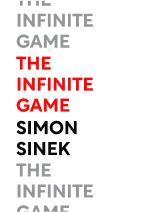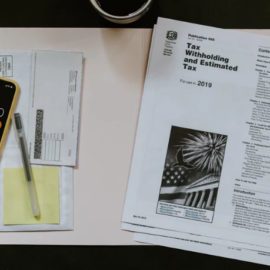

This article is an excerpt from the Shortform book guide to "The Infinite Game" by Simon Sinek. Shortform has the world's best summaries and analyses of books you should be reading.
Like this article? Sign up for a free trial here .
Do you have a rival whom you admire in some way? Is there a company that does at least one thing better than you do? How can you apply lessons from them to your own business?
In his book The Infinite Game, Simon Sinek emphasizes the importance of learning from your “worthy rivals.” A worthy rival is a competitor who is better than you at certain things, and who can therefore reveal to you ways you can improve, enabling you to better survive in the infinite game.
Here is how a worthy rival can inspire you to get better at what you do and can help you more clearly define yourself.
Infinite Mindset Rule 3: Study Your Worthy Rival
Studying your worthy rivals is Sinek’s third method of developing what he calls “the infinite mindset.” A worthy rival may make a better product, provide a better service, or command stronger customer loyalty than you do: anything from which you can draw lessons.
Rivals Help You Improve Your Game
Sinek maintains that viewing a competitor as a worthy rival rather than simply a rival can inspire you to improve rather than just to win, focusing your attention on process rather than outcome. When you respect your rivals and acknowledge what they do well, you are able to better see how their strengths can guide your own shortcomings.
Conversely, if you view your rivals with disdain or see them solely as competitors to beat, you’re far more likely to dismiss their strengths and ignore your own weaknesses, because your mind will be focused on figuring out how you’re superior to them.
| Worthy Rivals Turn Competition into Cooperation Timothy Gallwey also discusses how competition can improve performance in his book The Inner Game of Tennis. He contends that to achieve whatever goal you’re aiming for, you must overcome small obstacles along the way, and because a competitor presents you with these obstacles, they are a necessary element in achieving that higher goal. The benefits of competition are mutual between both players. Each player benefits from the other’s attempts to block them with obstacles, and consequently, competition ends up functioning as cooperation, allowing both parties to improve. The rivalry between tennis players Roger Federer and Rafael Nadal exemplify both Sinek’s concept of Worthy Rivals and Gallwey’s theory of competition as cooperation. Both Federer and Nadal have achieved great success in part because their mutual respect for each other has helped them each become better athletes. Over the years, each player has publicly acknowledged the other’s strengths and the friendship they share. In 2020, when Nadal won his 20th Grand Slam title and tied Federer’s record, Federer responded by congratulating Nadal and calling him his “greatest rival over many years,” noting that their rivalry has “pushed each other to become better players.” |
Rivals Help You Define Yourself
Sinek notes that when you have a worthy rival, that person or organization can help you define yourself in opposition to it. If your rival stands for certain principles and you stand for different principles, the comparison between the two of you can keep you focused on what you stand for and can also help make your principles clear to your customers.
For example, imagine you own an air-conditioner repair company and you want to expand into a new region where an existing company is already established. By studying the existing company, you might discover that their competitive edge comes from low prices and high volume. Your company, on the other hand, emphasizes responsive customer service and charges higher prices for it. By highlighting the different values your company stands by, you can attract customers who will be able to clearly see what you stand for because it is so different from your rival.
| Defining Yourself as Different From Your Rivals Sinek’s idea of using another company’s well-known business model to distinctly define your own business model is discussed in famed management book Blue Ocean Strategy by W. Chan Kim and Renée Mauborgne, which suggests that you create brand-new products and markets by adjusting a few elements of existing business models. Kim and Mauborgne discuss the success of Cirque du Soleil as an example of how a company can build off an existing, known company model to define itself in a new way. The company started as a group of street performers in the late 1970s in Quebec called Les Echassiers (the Stiltwalkers). They were moderately successful but were only able to stay financially viable through grants from the Canadian government. In 1984, they redefined themselves as a novel, contemporary type of circus by renaming themselves Cirque du Soleil. They differentiated themselves from better-known companies like Ringling Brothers by eliminating elements like animals and star performers and instead focusing on innovative venues and artistry, which customers valued more. By appealing to what people already knew about existing circuses, they were able to effectively position themselves as distinctive and unique, and their business took off. |
Look at the Bigger Picture, Not Your Rivals
Sinek argues that viewing your competitors as worthy rivals rather than rivals to beat can change your perspective on competition itself, so that you see competition as less of a win-lose dynamic and more of a cooperative effort. When you’re not exclusively focused on beating your competition, you’ll better see how your competitors add value to the economic ecosystem.
He cites the example of Alan Mulally, who took over as CEO of Ford in 2006. Ford weathered the 2008 stock market crash and subsequent recession better than its rivals did. Mulally was summoned to testify before Congress as they debated whether or not to issue a bailout to GM and Chrysler, both of which were close to bankruptcy. Mulally could have argued against the bailout and vanquished his rivals for good, but he saw that destroying them would destroy the suppliers and vendors who serviced the manufacturers, which would end up hurting Ford as well. His ultimate goal was not to vanquish its rivals but to survive among them. Thus, he encouraged Congress to issue the bailout.
| Tesla’s Infinite Mindset Sinek’s ideas here fit into the commonly known framework of zero-sum thinking versus positive-sum thinking. In a zero-sum game, there have to be losers if there are to be winners. In a positive-sum game, the success of some players contributes to the success of all players. People who see their interactions as positive-sum are generally more successful (and happier). A more recent example of a company putting the good of its industry over its own personal good is Tesla, which, in 2014, made its patents freely available to any competitors who wanted to use them “in good faith” to develop electric vehicles (EV). In his announcement, CEO Elon Musk referenced his larger vision (in Sinek’s phrasing, his “Just Cause”) to “accelerate the advent of sustainable transport.” He acknowledged that patents that limited other companies’ ability to innovate worked against that vision. He also noted that the company’s “true competition is not the small trickle of non-Tesla electric cars being produced, but rather the enormous flood of gasoline cars pouring out of the world’s factories every day,” and that all EV car companies, including Tesla, will benefit from accessible technology. In doing so, he positioned his EV competitors not as rivals but as partners. Tesla’s infinite-minded move aligns with Sinek’s concept of viewing competitors as worthy rivals, but with a caveat: While Musk sees other EV brands as worthy rivals, he views combustion-engine brands as rivals to beat. His sharing of patents is clearly aimed at putting EV engines in a stronger competitive position to combustion engines in a win-or-lose game. In this way, he seems to play both an infinite and a finite game at the same time. Sinek doesn’t speak to the possibility that a leader might play both an infinite and a finite game at the same time, but some critics of the book have noted that in real life, business decisions are often not as clear-cut as Sinek presents. For example, Mulally’s choice discussed above lacks some nuance that most companies face—he was faced with a fairly straightforward decision that would either obliterate his entire industry or allow all players to survive. However, Sinek might note that Musk sees traditional carmakers as worthy rivals in a different way, in that he defines Tesla’s Just Cause in opposition to their principles and business practices. In this way, Tesla demonstrates that there are many facets to playing an infinite game. By the nature of the game, you will have many different rivals representing many different threats, and your response to each may vary. The important thing is that you approach each rival with a different aspect of an infinite mind. |
The Infinite Game Continues Even After a Worthy Rival Drops Out
Sinek observes that sometimes a worthy rival runs out of resources to continue playing the infinite game—for example, a competitor goes bankrupt. When this happens, a company still left in the game might think that they have now “won” the game. However, in an infinite game, no one ultimately wins; the game continues and new players enter.
It might take years before a new rival enters the game. This delay can lead the company still playing to believe that their competition-free game will last forever (this is the “success trap” we referenced earlier). However, eventually, a new player always enters the infinite game.
Sinek discusses how a company that gets lost in the excitement of “winning” when a rival is defeated might lose sight of its long-term Just Cause and might start behaving as if it is immune to future competitive pressures. This can even if the company has, up until that point, operated with an infinite mindset. When this happens, such a company can lose its direction, ultimately leaving it vulnerable to defeat when later, as inevitably happens, another player enters operating under a focused Just Cause of its own.
| The Infinite Game Is Always More Than Your Immediate Rival Though Sinek doesn’t address this specifically, another danger of fixating on your immediate competition is that you may be blinded to seismic changes in your industry’s landscape—often brought on by a third, unexpected rival entering the game. For example, Coke focused for so long on defeating its rival Pepsi that it failed to see and respond to a new competitor: Red Bull. By 2019, Red Bull had established itself as the market leader in energy drinks, a category in which Coke didn’t even offer a product. Coke finally introduced “Coke Energy” in the U.S. in 2020, to middling reviews in which the company found itself in the novel position of being compared to a market leader rather than setting the standards itself. |

———End of Preview———
Like what you just read? Read the rest of the world's best book summary and analysis of Simon Sinek's "The Infinite Game" at Shortform .
Here's what you'll find in our full The Infinite Game summary :
- Why businesses who see the game as finite don't survive
- How to develop an infinite mindset that will put you and your organization on a path for long-term success
- How the purpose of business is changing






